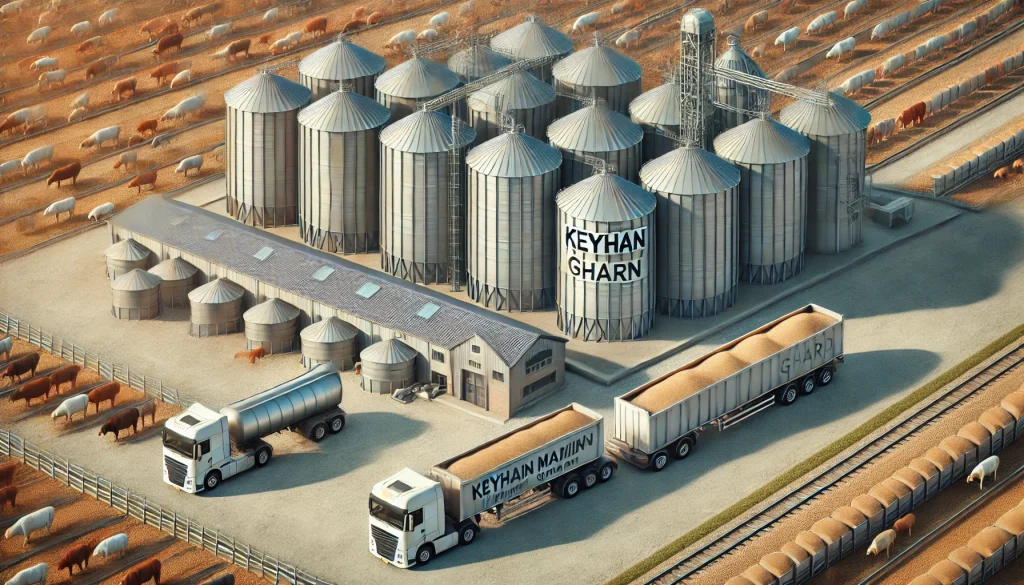
Introduction
The price of livestock feed is one of the most influential factors in the livestock industry. Fluctuations in these prices can affect production costs and, ultimately, the prices of livestock products such as meat, milk, and eggs. This article examines the various factors that influence the price of livestock feed.
1. Supply and Demand in the Livestock Feed Market
One of the main factors affecting the price of livestock feed is the balance of supply and demand in the market. Any changes in the demand for animal feed or fluctuations in supply directly impact the price of these products.
Factors Influencing Supply and Demand:
- Increase or decrease in livestock population: A rise in the number of livestock leads to higher demand for animal feed.
- Changes in livestock diets: Reformulations of animal feed based on scientific studies can alter demand.
- Import and export of livestock feed: Trade policies of different countries play a crucial role in controlling supply.
- Natural disasters and droughts: A decline in the production of agricultural products used as animal feed raises feed prices.

2. Impact of Exchange Rates and Inflation
Fluctuations in exchange rates are among the most significant factors affecting the price of livestock feed, as many of these products are imported.
Effects of Exchange Rates on Livestock Feed Prices:
- An increase in exchange rates raises import costs for livestock feed.
- Depreciation of the national currency leads to higher feed prices in domestic markets.
- Monetary policies and inflation rates affect the purchasing power of livestock farmers.
3. Government Policies and Import Tariffs
Government policies and customs tariffs also play a significant role in determining livestock feed prices. Some key government actions impacting these prices include:
- Providing subsidies to reduce production costs
- Imposing tariffs on livestock feed imports
- Supporting domestic production to reduce reliance on imports
- Import restrictions in certain countries that can limit supply and increase prices
4. Climate Conditions and Environmental Changes
Climate change has a direct impact on agricultural production, which serves as a source of livestock feed. Droughts, floods, and extreme seasonal changes can all influence livestock feed prices.
Effects of Weather Conditions:
- Reduced grain production, such as corn and barley
- Increased transportation costs due to adverse weather conditions
- Higher livestock maintenance costs and lower production levels
5. Impact of Fuel Prices and Transportation Costs
Transportation is a major expense in the livestock feed supply chain. Rising fuel prices lead to higher transportation costs for livestock feed.
Effects of Rising Fuel Prices:
- Increased costs of importing livestock feed
- Higher distribution and logistics expenses
- Impact on the final cost of animal feed
6. Comparative Table of Factors Affecting Livestock Feed Prices
| Influencing Factor | Impact on Price | Explanation |
|---|---|---|
| Supply and Demand | Increase or decrease in price | More livestock = Higher demand |
| Exchange Rates | Increased import costs | Direct impact on prices |
| Government Policies | Control or increase in prices | Tariffs and government subsidies |
| Weather Conditions | Increased production costs | Drought and climate changes |
| Fuel Prices | Higher transportation costs | Impact on distribution costs |
Conclusion
This article examined the various factors affecting the price of livestock feed. As discussed, these prices are influenced by multiple elements, including supply and demand, exchange rates, government policies, weather conditions, and transportation costs. Keyhan Matin Gharan Company strives to minimize feed supply costs and mitigate market fluctuations by implementing effective and up-to-date solutions.
Recommendations for Managing Livestock Feed Prices:
- Using cheaper and more accessible alternatives
- Increasing domestic production of livestock feed
- Applying modern technologies in animal nutrition
- Reducing import dependency and utilizing local resources
Latest Articles
- Quality Standards for Imported Livestock Feed in Iran
- The Importance of Understanding Global Markets in Livestock Feed Purchases
- Impact of Imported Livestock Feed Quality on Animal Health
- Steps for Importing Goods into Iran
- Strategies for Reducing Customs Clearance Costs in Iran
